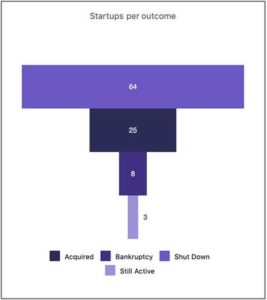Feeding the Bandwidth Needs of UCaaS is Key to Reaping its Benefits (And That’s Why Enterprises Are Turning to SD-WAN)

UCaaS (Unified Communications as a Service) is rapidly changing the way the modern enterprise does communication and collaboration. As a result, UCaaS adoption is growing rapidly. Driven in large part by the promise of lower overall TCO, reduced capex, and lower opex, the UCaaS market is expected to grow to $79.3 billion by 2024 according to Transparency Market Research.
Improving the delivery of communication and collaboration services like cloud PBX (Private Branch Exchange), video conferencing, instant messaging, and desktop sharing to users at a lower overall cost creates quite the compelling proposition for enterprises. However, in many cases the WAN can become a bottleneck to organizations looking to get the most out of UCaaS. In 2018 roughly 38% of organizations polled by Nemertes Research saw WAN costs rise an average of 23.5% after adopting UCaaS. Further, about 33% of the respondents called out increased network spend as the biggest factor increasing their Unified Communications expenditures in their first year shifting to the cloud.
What’s driving the increased spend? In short, increased bandwidth usage. Legacy MPLS (Multiprotocol Label Switching) bandwidth is expensive, and MPLS simply isn’t flexible enough for modern cloud workloads. Fortunately, there are modern, cloud-based SD-WAN solutions, namely SDWaaS (SD-WAN as a Service), that offer enterprises the balance of affordability and reliability required to get the most out of UCaaS without breaking the bank.
In this piece, we’ll dive into the challenges that enterprises using legacy WAN solutions face when adopting UCaaS, and how SDWaaS helps address them.
MPLS drives up UCaaS TCO
To get the most out of UCaaS, you need reliable connectivity and a lot of bandwidth. Services like VoIP, telepresence, and video-streaming can eat up a lot of bandwidth and become unusable if the network can’t meet demands. Adding bandwidth is often an unavoidable reality when shifting to UCaaS, but doing so with MPLS can be a burden. MPLS can deliver packets reliably, but bandwidth is expensive and MPLS simply isn’t cloud friendly.
For example, many enterprises that use MPLS and shift workloads to the cloud struggle with the notorious trombone-routing problem. Internet-bound traffic is often first routed to a central location on the WAN for security/auditing purposes and then routed on to its destination, and return traffic takes the same loop back. This amounts to a costly and inefficient approach to cloud workloads, and the downsides are exacerbated with bandwidth-hungry cloud services like UCaaS. Simply put, MPLS was designed to solve the problem of reliable communication between locations but isn’t flexible or economical enough for UCaaS.
Using more affordable public Internet bandwidth can help organizations solve this problem, but they need a practical and secure way to do so. This is where SD-WAN comes in.
How does SD-WAN solve this problem?
The obvious answer here is that SD-WAN allows businesses to avoid the significant cost of MPLS bandwidth. SD-WAN enables enterprises to leverage a variety of transport types (ASDL, 5G, fiber, etc.) and optimize their WAN expenditures by using public Internet bandwidth when it makes sense. Additionally, modern SD-WAN solutions enable traffic shaping (e.g. QoS) to ensure latency-sensitive UCaaS apps take priority over less sensitive traffic.
What this means is that enterprises can enjoy the benefits of UCaaS without breaking the bank. Just how big can the savings be? According to Memertes, organizations that switched 90% or more of their WAN infrastructure to SD-WAN saw management costs reduced by an average of 20%. However, potential savings can be even greater. To provide an example of potential real-world benefits, consider the following: a 200-site enterprise that uses MPLS can save over $2 million USD per year by shifting to 100% SD-WAN adoption (reducing spend from $3.476 million USD to $1.321 million USD).
Resilience and reliability: the additional benefits of SDWaaS
Oftentimes in the SD-WAN vs MPLS argument, proponents of MPLS will argue for the legacy solution by calling out the lack of reliability in the public Internet. If you’ve ever been on the other end of a choppy VoIP call or pixelated videoconference, you know why this could be a deal-breaker for UCaaS. However, when you consider SDWaaS as your SD-WAN solution, this argument no longer holds weight.
SDWaaS includes a robust, secure, and global private backbone that comes with an SLA and is supported by Tier 1 ISPs (Internet Service Providers). Additionally, SDWaaS offers a baked-in security stack and auto-healing features to maximize uptime. For enterprises, this means MPLS-level performance and reliability can be achieved (and exceeded) while still retaining the benefits of agility and affordable bandwidth that makes SD-WAN so attractive.
SDWaaS helps business get the most out of UCaaS
As we have seen, UCaaS can be a game-changer for enterprises, but using legacy WAN solutions can significantly erode the benefits of UCaaS. By leveraging SDWaaS enterprises can make the shift to cloud based Unified Communications without seeing network costs increase. Further, SDWaaS sets itself apart from other SD-WAN solutions by ensuring businesses get the reliability and performance they need for enterprise-grade UCaaS.






